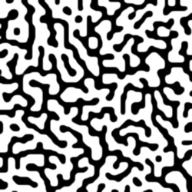Please help? If Sin A = 3/4 Then find cosA and tanA. Thanks?
2016-05-11 4:29 am
回答 (10)
2016-05-11 9:23 am
x² = 4² - 3²
x² = 7
x = √7
cos A = √7 / 4 , tan A = 3 / √7
x² = 7
x = √7
cos A = √7 / 4 , tan A = 3 / √7
2016-05-11 5:40 am
sin A = 3/4
cos A = √7/4
tan A = 3/√7
cos A = √7/4
tan A = 3/√7
2016-05-11 5:14 am
sinA = (3/4). Now sin is pos in quads 1 & 2. We first consider A in quad 1. Then both cos & tan are pos
with cosA = [1 - (3/4)^2]^(1/2) = (1/4)rt7 and tanA = sinA/cosA = (3/4)/[(1/4)rt7] = (3/7)rt7. We secondly
consider A in quad 2 where cos & tan are both neg & = [-(1/4)rt7 , -(3/7)rt7] respectively.
with cosA = [1 - (3/4)^2]^(1/2) = (1/4)rt7 and tanA = sinA/cosA = (3/4)/[(1/4)rt7] = (3/7)rt7. We secondly
consider A in quad 2 where cos & tan are both neg & = [-(1/4)rt7 , -(3/7)rt7] respectively.
2016-05-11 4:37 am
if sin(A) = 3/4, then we know the 4 can be a hypotenuse of a right triangle with the 3 being the opposite. So we can use Pythagorean Theorem to find the adjacent side:
a² + b² = c²
a² + 3² = 4²
a² + 9 = 16
a² = 7
a = √7
So now that we know that, we can find cos(A) and tan(A):
cos() = adj/hyp and tan() = opp/adj
cos(A) = √(7) / 4 and tan(A) = 3/√7
simplifying:
cos(A) = √(7) / 4 and tan(A) = (3/7)√7
As a sanity test, let's see what "A" would be:
A ≈ 48.59°
so:
cos(48.59) = 0.6614 and tan(48.59) = 1.134
Testing:
√(7) / 4 = 0.6614 and (3/7)√7 = 1.134
So I'm correct.
a² + b² = c²
a² + 3² = 4²
a² + 9 = 16
a² = 7
a = √7
So now that we know that, we can find cos(A) and tan(A):
cos() = adj/hyp and tan() = opp/adj
cos(A) = √(7) / 4 and tan(A) = 3/√7
simplifying:
cos(A) = √(7) / 4 and tan(A) = (3/7)√7
As a sanity test, let's see what "A" would be:
A ≈ 48.59°
so:
cos(48.59) = 0.6614 and tan(48.59) = 1.134
Testing:
√(7) / 4 = 0.6614 and (3/7)√7 = 1.134
So I'm correct.
2016-05-11 4:37 am
Very straightforward.
If sinA = 3/4, then the ratio of opp/hyp = 3/4.
Let's just say they are
opp = 3 and
hyp = 4.
If you imagine that as an angle in a right triangle, the adj would be √4^2 - 3^2 = √16 - 9 = √7
adj = √
So cosA = adj/hyp √7 / 4
And tan = opp/adj = 3/√7 = (3√7)/7
If sinA = 3/4, then the ratio of opp/hyp = 3/4.
Let's just say they are
opp = 3 and
hyp = 4.
If you imagine that as an angle in a right triangle, the adj would be √4^2 - 3^2 = √16 - 9 = √7
adj = √
So cosA = adj/hyp √7 / 4
And tan = opp/adj = 3/√7 = (3√7)/7
2016-05-11 4:37 am
SinA = opp. / hyp.
Find your third side = a^2 + b^2 = c^2
3^2 + b^2 = 4^2
9 + b^2 = 16
b^2 = 7
b = sqrt(7)
cosA = adj. / hyp.
cosA = sqrt(7) / 4
tanA = opp. / adj.
tanA = 3 / sqrt(7)
Find your third side = a^2 + b^2 = c^2
3^2 + b^2 = 4^2
9 + b^2 = 16
b^2 = 7
b = sqrt(7)
cosA = adj. / hyp.
cosA = sqrt(7) / 4
tanA = opp. / adj.
tanA = 3 / sqrt(7)
2016-05-11 4:37 am
find the Sin ^-1 of 3/4 and you have A, then just plug A into the other equations
2016-05-12 2:21 pm
cos(A) = √(7)/4
tan(A) = 3/√(7)
tan(A) = 3/√(7)
2016-05-11 4:50 am
Is A in quadrant I or in quadrant II?
You will get different answers.
You will get different answers.
2016-05-11 4:47 am
This is killing me. Some fairly heavy hitters are responding, but no one is even considering the possibility of negative numbers. This shows a limitation of the right-triangle model. Not all angles are acute, and the argument of a trigonometric function is not necessarily an angle anyway.
cos²(A) + sin²(A) = 1
cos²(A) + (3/4)² = 1
cos²(A) + 9/16 = 1
cos²(A) = 7/16
cos(A) = ±√(7)/4
tan(A) = sin(A)/cos(A)
tan(A) = (3/4) / [±√(7)/4]
tan(A) = 3 / [±√(7)]
tan(A) = ±3√(7)/7
We cannot know the signs of cos(A) or tan(A), but they must have the same sign.
cos(A) = ±√(7)/4
tan(A) = ±3√(7)/7
cos²(A) + sin²(A) = 1
cos²(A) + (3/4)² = 1
cos²(A) + 9/16 = 1
cos²(A) = 7/16
cos(A) = ±√(7)/4
tan(A) = sin(A)/cos(A)
tan(A) = (3/4) / [±√(7)/4]
tan(A) = 3 / [±√(7)]
tan(A) = ±3√(7)/7
We cannot know the signs of cos(A) or tan(A), but they must have the same sign.
cos(A) = ±√(7)/4
tan(A) = ±3√(7)/7
收錄日期: 2021-05-01 20:42:31
原文連結 [永久失效]:
https://hk.answers.yahoo.com/question/index?qid=20160510202915AALM2aK



